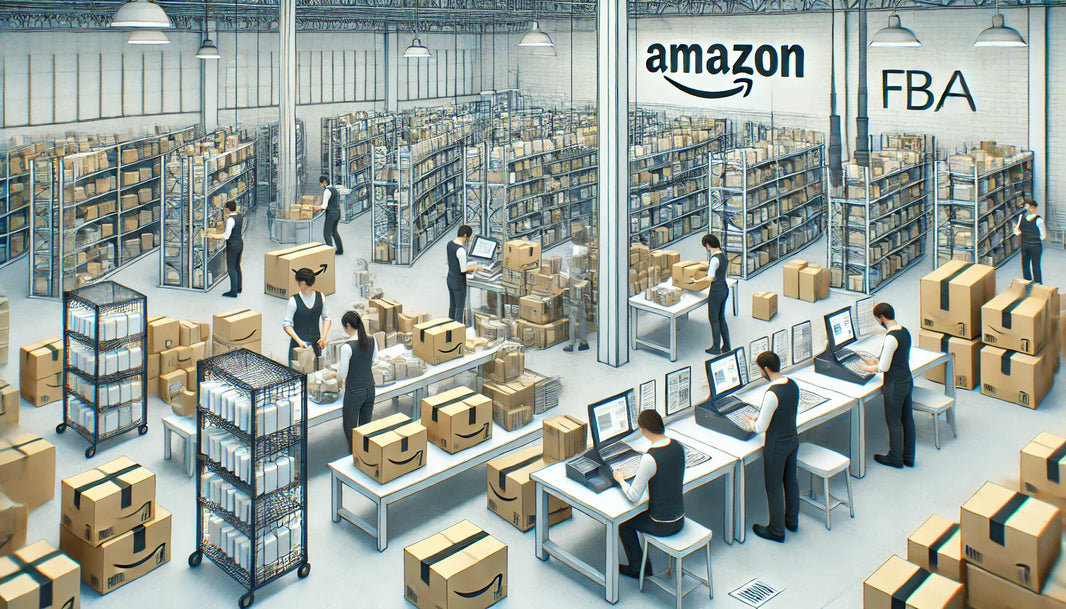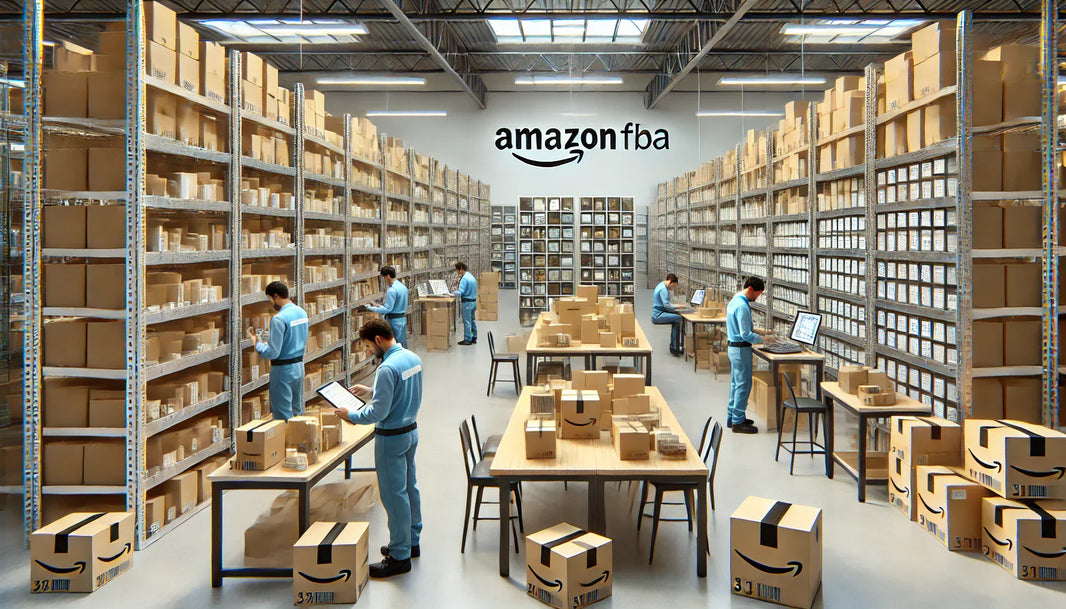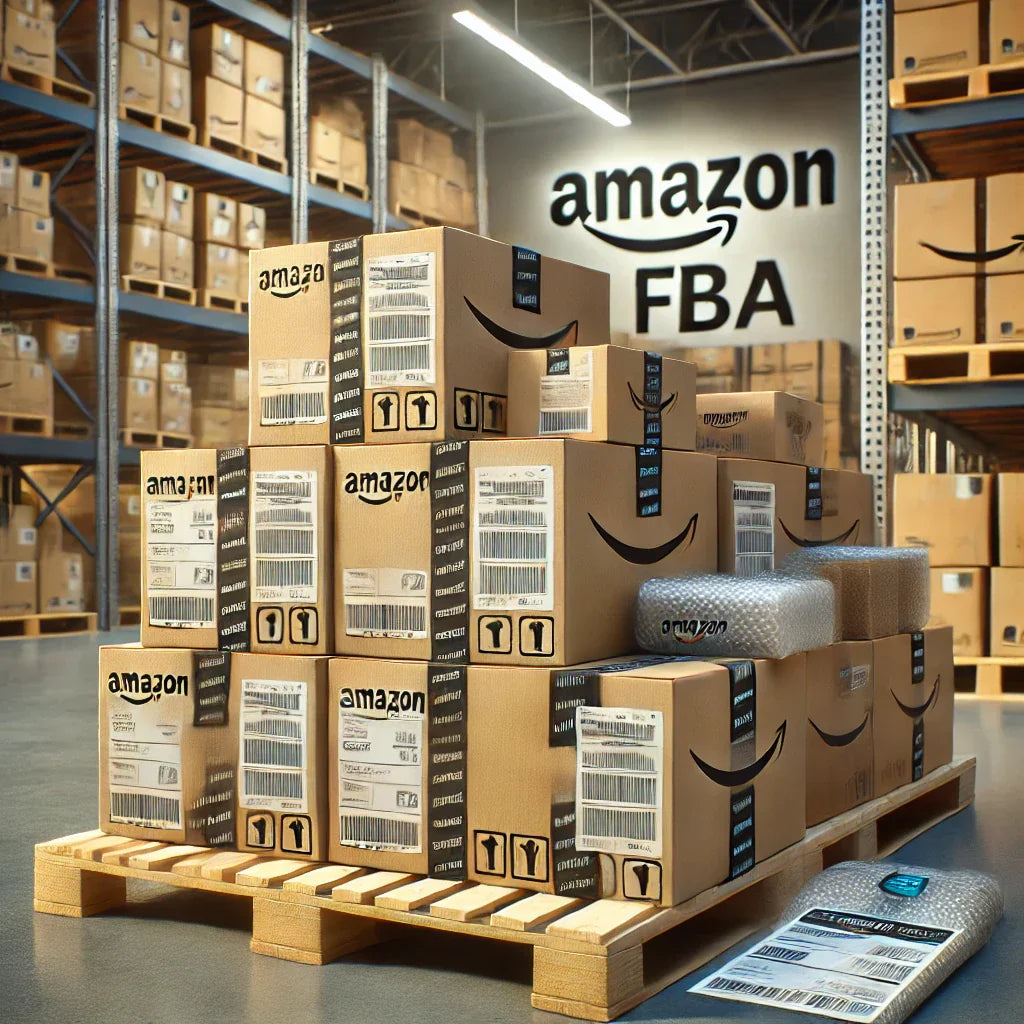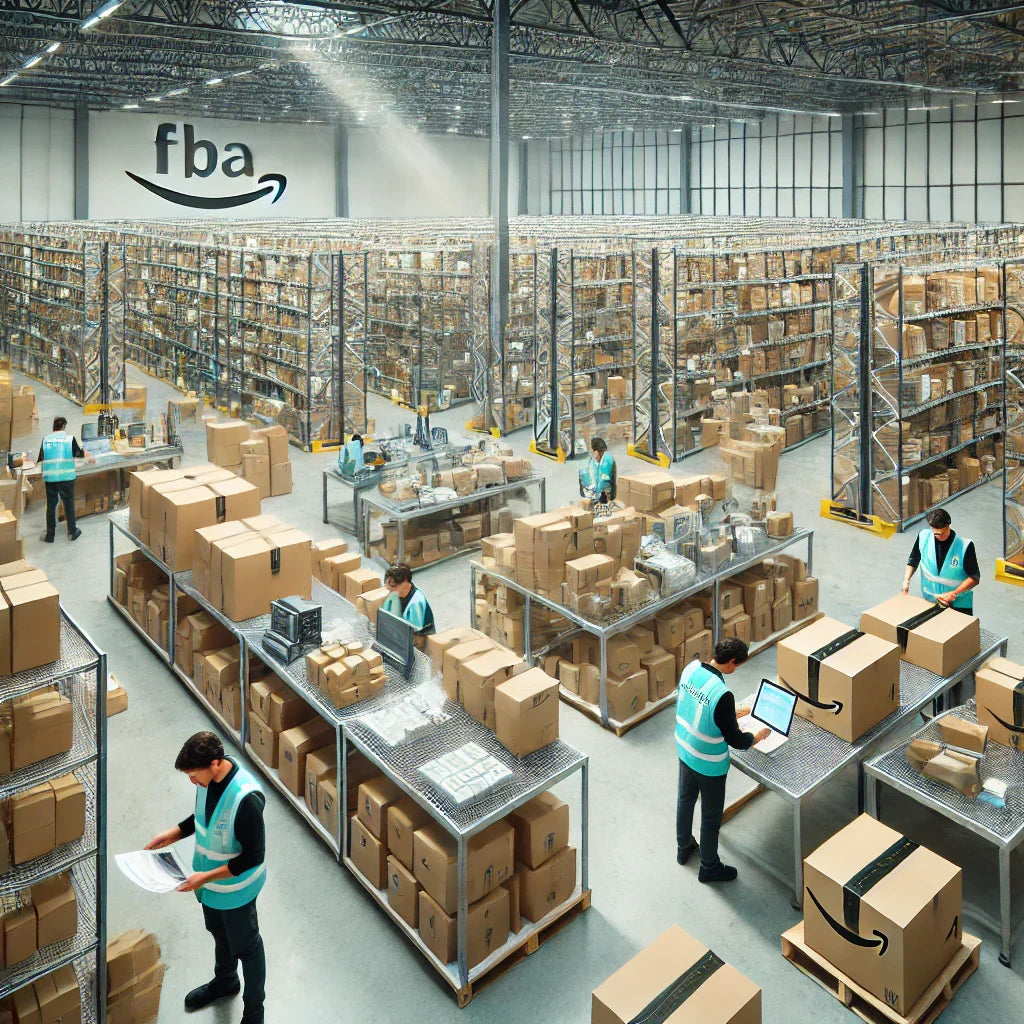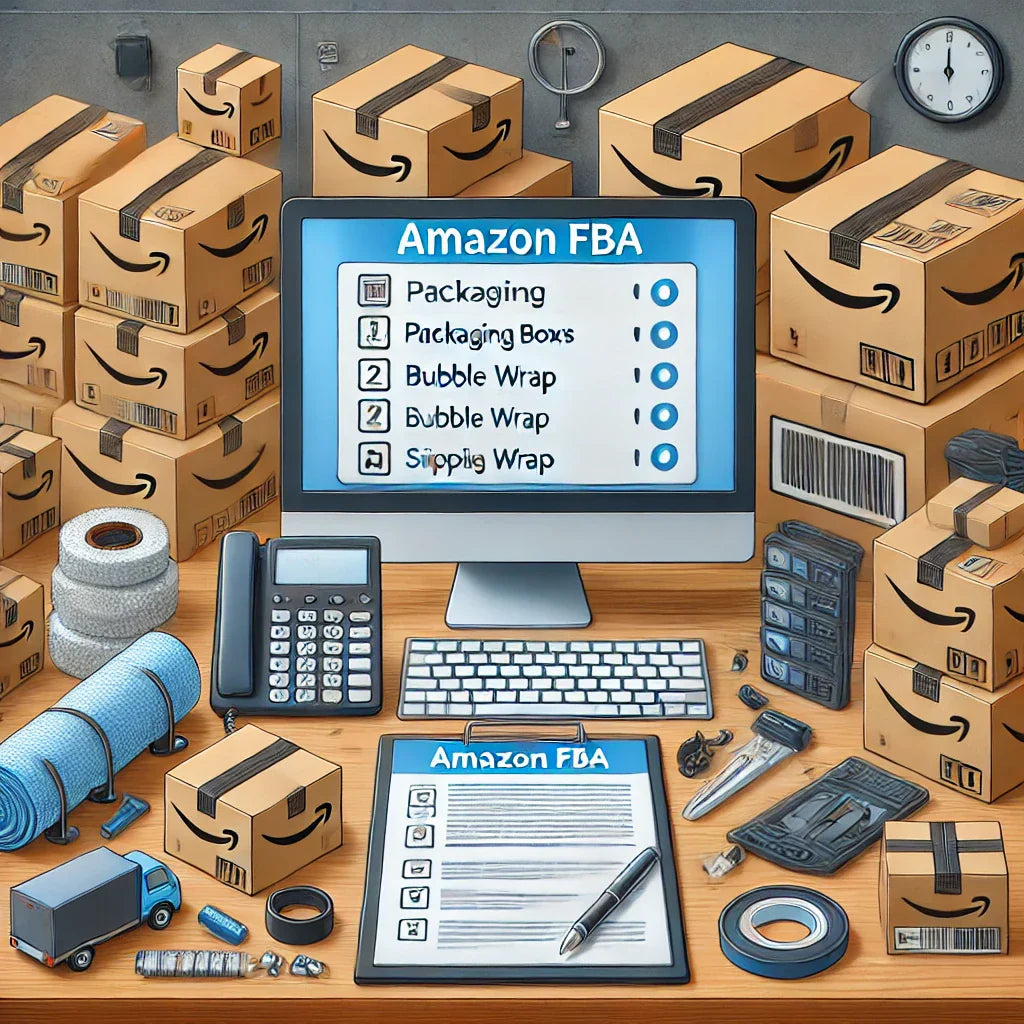In the fast-paced world of warehousing and logistics, efficiency is the cornerstone of success. Distribution centers play a pivotal role in optimizing operations by streamlining the movement, storage, and management of goods. These centralized hubs serve as the backbone of supply chains, ensuring that products are stored effectively and delivered on time to meet the demands of businesses and consumers alike. By leveraging advanced technologies, strategic layouts, and precise inventory management systems, distribution centers not only enhance operational efficiency but also reduce costs and improve customer satisfaction. This article explores the critical ways distribution centers enhance efficiency in warehousing and logistics, paving the way for seamless supply chain performance.

The Role of Distribution Centers in Modern Supply Chains
Distribution centers are more than just storage facilities; they are operational hubs that link suppliers, manufacturers, and customers. Unlike traditional warehouses, which primarily focus on long-term storage, distribution centers are designed to expedite the movement of goods. Their strategic positioning and operational agility enable businesses to respond quickly to market demands, ensuring that products reach their intended destinations with minimal delay.
Bridging the Gap Between Production and Consumption
One of the key functions of a distribution center is to act as an intermediary between production sites and end-users. By receiving bulk shipments from manufacturers and redistributing them in smaller quantities to retailers or customers, distribution centers help reduce lead times and optimize transportation costs. This role becomes particularly crucial in industries with high turnover rates, such as retail and e-commerce, where timely deliveries can make or break customer satisfaction.
Enhancing Inventory Management
Distribution centers employ sophisticated inventory management systems to maintain real-time visibility into stock levels. These systems utilize technologies such as barcoding, radio frequency identification (RFID), and warehouse management software (WMS) to track the movement of goods accurately. This level of control minimizes the risk of overstocking or stockouts, ensuring that supply aligns with demand.
Streamlining Operations Through Technology
The integration of advanced technology is at the heart of modern distribution center operations. By automating routine tasks and leveraging data-driven insights, distribution centers can significantly improve their efficiency.
Automation and Robotics
Automation plays a pivotal role in reducing manual labor and accelerating processes within distribution centers. Automated guided vehicles (AGVs), robotic arms, and conveyor systems are commonly used to transport, sort, and pack goods. These technologies not only speed up operations but also enhance accuracy by minimizing human error.
Data Analytics for Decision-Making
The use of data analytics in distribution centers enables better decision-making and predictive planning. By analyzing historical data and current trends, businesses can anticipate demand fluctuations, optimize stock levels, and plan efficient delivery routes. This proactive approach reduces downtime and ensures that resources are allocated effectively.
Internet of Things (IoT) Integration
IoT devices are increasingly being adopted to enhance visibility and control within distribution centers. Sensors and trackers provide real-time data on inventory status, equipment performance, and environmental conditions. This information helps operators address issues promptly, maintain product quality, and reduce operational disruptions.
Strategic Location Planning for Distribution Centers
The geographical positioning of distribution centers is a critical factor in their efficiency. A strategically located distribution center can minimize transportation costs, reduce delivery times, and improve overall supply chain performance.
Proximity to Key Markets
Locating distribution centers near major markets or transportation hubs ensures faster delivery to end-users. This strategy is particularly beneficial for e-commerce businesses that prioritize same-day or next-day deliveries. By reducing the distance between distribution centers and customers, businesses can achieve significant cost savings and enhance customer satisfaction.
Accessibility to Transportation Infrastructure
Distribution centers thrive on their connectivity to transportation networks, including highways, railroads, ports, and airports. Easy access to these modes of transport facilitates the seamless movement of goods and minimizes delays. Additionally, multi-modal transportation options allow for greater flexibility in meeting delivery requirements.
Regional Demand Analysis
When planning distribution center locations, businesses must analyze regional demand patterns and market trends. Understanding the specific needs of each region enables companies to position their facilities where they can provide the greatest value, ensuring that supply chain operations remain responsive and efficient.
Optimizing Storage and Layout Design
Efficient storage and layout design are essential components of distribution center operations. These elements directly impact the speed and accuracy of order fulfillment, as well as the overall productivity of the facility.
High-Density Storage Solutions
Maximizing storage capacity is a priority for distribution centers, especially those handling high volumes of inventory. High-density storage solutions, such as pallet racking systems and automated storage and retrieval systems (ASRS), allow for the efficient use of vertical space. These systems facilitate quick access to goods while minimizing the facility’s footprint.
Streamlined Workflow Design
The layout of a distribution center is carefully planned to minimize unnecessary movement and maximize efficiency. Goods are strategically placed based on their demand frequency, with fast-moving items positioned closer to loading docks for quicker access. This approach reduces picking times and enhances order accuracy.
Cross-Docking for Rapid Turnaround
Cross-docking is a logistics strategy employed in distribution centers to expedite the transfer of goods from inbound to outbound transportation. By eliminating the need for long-term storage, cross-docking reduces handling times and accelerates delivery schedules. This method is particularly effective for perishable goods or high-demand items.
Reducing Costs Through Efficiency Improvements
One of the primary objectives of distribution centers is to lower operational costs while maintaining high service levels. By focusing on efficiency, businesses can achieve significant cost savings in various aspects of their supply chain.
Transportation Cost Optimization
Transportation often accounts for a significant portion of supply chain expenses. Distribution centers help optimize transportation costs by consolidating shipments and reducing the frequency of deliveries. Additionally, route optimization technologies enable companies to identify the most efficient paths, further cutting down on fuel and labor costs.
Labor Cost Reduction
The implementation of automation and robotics reduces the reliance on manual labor, leading to lower staffing costs. Moreover, by streamlining workflows and minimizing repetitive tasks, distribution centers can make better use of their human resources, focusing on higher-value activities.
Energy Efficiency Measures
Sustainability is becoming an integral part of distribution center operations. Energy-efficient lighting, renewable energy sources, and climate-controlled systems not only reduce operational costs but also align with environmental standards. These measures contribute to long-term savings while promoting corporate social responsibility.
Enhancing Customer Satisfaction
Efficient distribution centers are instrumental in meeting customer expectations and fostering loyalty. By ensuring timely deliveries and accurate order fulfillment, businesses can build strong relationships with their customers.
Faster Delivery Times
The strategic positioning and streamlined operations of distribution centers enable faster delivery times, a key factor in today’s competitive market. Whether it’s same-day delivery for e-commerce orders or on-time shipments for B2B clients, speed is a critical driver of customer satisfaction.
Accurate Order Fulfillment
Mistakes in order fulfillment can lead to customer dissatisfaction and increased returns. Distribution centers mitigate these risks through advanced inventory tracking and automated picking systems, ensuring that the right products reach the right customers.
Flexibility to Meet Changing Demands
Distribution centers offer the flexibility needed to adapt to changing market conditions and customer preferences. Whether it’s scaling operations during peak seasons or handling special requests, their ability to respond quickly enhances the overall customer experience.

Future Trends in Distribution Centers
As technology and consumer expectations continue to evolve, distribution centers must adapt to stay competitive. Emerging trends are shaping the future of these facilities, further enhancing their efficiency and capabilities.
Integration of Artificial Intelligence (AI)
AI-powered solutions are revolutionizing distribution center operations by enabling predictive analytics, demand forecasting, and intelligent automation. These advancements help businesses make data-driven decisions and optimize their supply chains.
Sustainability Initiatives
Sustainability is gaining prominence in the logistics industry. Distribution centers are adopting eco-friendly practices, such as using electric vehicles for transportation, implementing waste reduction programs, and investing in green building certifications.
Advanced Robotics and Drones
The use of advanced robotics and drones is transforming how goods are handled and delivered. From automated picking and packing to drone-based last-mile deliveries, these technologies offer unprecedented efficiency and convenience.
Evolving Technologies Driving Distribution Center Efficiency
Technological innovation continues to revolutionize distribution center operations, introducing tools and systems that improve accuracy, speed, and scalability. In addition to automation and data analytics, several emerging technologies are poised to further enhance efficiency.
Artificial Intelligence (AI) in Logistics Operations
Artificial intelligence has become a powerful tool in the logistics sector, allowing distribution centers to predict demand, optimize inventory levels, and enhance overall efficiency. AI-driven software analyzes historical and real-time data to identify patterns, enabling businesses to anticipate market changes and adjust their operations accordingly. For instance, AI can optimize picking routes, ensuring workers or robots retrieve goods in the shortest possible time.
AI also facilitates smarter inventory management through automated reordering systems. These systems monitor stock levels in real time, triggering replenishment when certain thresholds are met. This minimizes overstocking and stockouts, ensuring resources are allocated efficiently.
Blockchain for Supply Chain Transparency
Blockchain technology has introduced unprecedented levels of transparency and traceability to supply chains. By recording every transaction in an immutable ledger, blockchain ensures that all parties—manufacturers, suppliers, distribution centers, and customers—have access to accurate information about the movement of goods. This is particularly valuable for industries where regulatory compliance and product authenticity are critical, such as pharmaceuticals and luxury goods.
In distribution centers, blockchain integration enables real-time tracking of shipments, reducing the risk of delays or discrepancies. It also enhances trust among supply chain partners by providing a single source of truth for all transactions.
Autonomous Delivery Systems
Autonomous vehicles and drones are transforming the last-mile delivery landscape, but their impact begins within distribution centers. Autonomous forklifts and guided vehicles streamline the movement of goods, reducing dependency on manual labor. Drones equipped with cameras and sensors are increasingly being used for inventory checks, providing accurate data without requiring human intervention.
As these technologies mature, distribution centers will be better equipped to handle higher volumes of goods with greater efficiency, ensuring seamless transitions from storage to delivery.
Workforce Optimization in Distribution Centers
While technology plays a significant role in improving distribution center efficiency, human labor remains an essential component. Optimizing workforce management ensures that employees are utilized effectively and operations run smoothly.
Employee Training and Upskilling
The integration of advanced technologies requires employees to acquire new skills. Distribution centers are investing in training programs to ensure their workforce can effectively operate automation systems, robotics, and warehouse management software. Upskilling not only improves operational efficiency but also boosts employee morale by providing opportunities for career growth.
Training programs often focus on safety measures as well, given the prevalence of heavy machinery and automated equipment in modern distribution centers. Ensuring employees are familiar with safety protocols reduces the risk of accidents and enhances overall productivity.
Labor Demand Forecasting
Seasonal fluctuations in demand often necessitate changes in workforce size. For example, e-commerce businesses experience significant surges during holidays or promotional events. Distribution centers use predictive analytics to forecast labor requirements, allowing them to hire temporary workers or reassign staff as needed. This proactive approach ensures that facilities can handle increased workloads without compromising efficiency.
Enhancing Employee Productivity
Ergonomic workstation design, optimized workflows, and the use of wearable technology are all strategies employed to enhance employee productivity. Wearable devices, such as smart glasses and wrist-mounted scanners, provide workers with real-time information about inventory locations and order details. These tools reduce downtime and improve picking accuracy, contributing to faster order fulfillment.
Sustainability Practices in Distribution Centers
As sustainability becomes a top priority for businesses, distribution centers are adopting eco-friendly practices to reduce their environmental impact. These initiatives not only align with corporate social responsibility goals but also contribute to cost savings and operational efficiency.
Green Building Certifications
Many distribution centers are pursuing certifications such as LEED (Leadership in Energy and Environmental Design) to demonstrate their commitment to sustainability. These certifications recognize facilities that incorporate energy-efficient systems, water-saving measures, and sustainable materials. For example, LED lighting, solar panels, and natural ventilation systems are commonly used to reduce energy consumption.
Green building certifications also improve a company’s reputation, appealing to environmentally conscious consumers and stakeholders.
Waste Management and Recycling Programs
Distribution centers generate significant amounts of waste, including packaging materials, pallets, and electronic components. Implementing comprehensive waste management programs helps reduce landfill contributions and promotes recycling. Facilities often partner with recycling companies to process cardboard, plastic, and metal waste.
Additionally, some distribution centers adopt circular economy principles by refurbishing and reusing equipment, such as pallets and containers. These practices reduce waste and lower procurement costs.
Renewable Energy Integration
To reduce reliance on non-renewable energy sources, distribution centers are increasingly adopting renewable energy solutions. Solar panels and wind turbines are commonly installed on facility rooftops or nearby land, providing clean energy for operations. Battery storage systems ensure that energy generated during off-peak hours can be used later, further enhancing efficiency.
Managing Risk in Distribution Center Operations
Risk management is a critical aspect of distribution center efficiency. Unexpected disruptions, such as equipment failures, supply chain delays, or natural disasters, can significantly impact operations. Proactive measures help mitigate these risks and ensure business continuity.
Contingency Planning
Effective contingency planning involves identifying potential risks and developing strategies to address them. For example, distribution centers often create backup plans for equipment breakdowns, such as maintaining a reserve of spare parts or having service contracts with equipment providers. Similarly, supply chain disruptions can be mitigated by diversifying suppliers and maintaining safety stock.
Cybersecurity Measures
As distribution centers adopt IoT devices and cloud-based management systems, cybersecurity becomes a top priority. Data breaches or system failures can disrupt operations and compromise sensitive information. Implementing robust cybersecurity measures, such as firewalls, encryption, and regular software updates, helps protect against potential threats.
Insurance Coverage
Insurance policies tailored to the needs of distribution centers provide financial protection against unexpected events. These policies often cover damages caused by natural disasters, theft, or equipment malfunctions. By ensuring adequate coverage, businesses can recover quickly from disruptions and minimize financial losses.

Adapting to Evolving Customer Expectations
The rise of e-commerce and on-demand services has fundamentally changed customer expectations. Distribution centers must adapt to meet these evolving demands, balancing speed, accuracy, and cost-effectiveness.
Omnichannel Fulfillment Strategies
Consumers now expect seamless shopping experiences across multiple channels, whether they’re purchasing online, in-store, or through mobile apps. Distribution centers play a key role in enabling omnichannel fulfillment by managing inventory across various platforms and ensuring timely deliveries.
For example, some distribution centers function as micro-fulfillment centers for online orders, allowing for same-day or next-day delivery. Others support "buy online, pick up in store" (BOPIS) services by coordinating inventory transfers to retail locations.
Personalized Delivery Options
Offering personalized delivery options enhances customer satisfaction. Distribution centers achieve this by integrating advanced route planning software and collaborating with logistics providers to offer flexible delivery windows, real-time tracking, and alternative delivery locations. These options cater to individual preferences, ensuring a positive customer experience.
Managing Returns Efficiently
Returns management is an essential aspect of modern distribution center operations. Efficient handling of returned goods minimizes losses and supports customer retention. Advanced inventory tracking systems streamline the returns process, allowing products to be inspected, refurbished, or restocked quickly. Reverse logistics strategies, such as dedicated returns processing areas, further enhance efficiency.
The Economic Impact of Distribution Centers
Distribution centers not only enhance operational efficiency but also contribute significantly to local and global economies. Their role extends beyond logistics, influencing employment, infrastructure development, and economic growth.
Job Creation
Distribution centers are major employers, offering a wide range of roles, from warehouse staff to management positions. As automation becomes more prevalent, new opportunities in technology development, maintenance, and data analysis are emerging. These facilities provide stable employment and contribute to the economic well-being of their communities.
Infrastructure Development
The establishment of distribution centers often drives infrastructure development in surrounding areas. Improved road networks, transportation facilities, and utility systems benefit both businesses and residents. These developments enhance regional connectivity and support economic growth.
Supporting Small Businesses
Small and medium-sized enterprises (SMEs) often rely on distribution centers to access global markets. By offering storage, order fulfillment, and transportation services, distribution centers enable SMEs to compete with larger companies. This support fosters entrepreneurship and drives innovation across industries.
The Impact of Distribution Centers on Global Trade
Distribution centers play a pivotal role in enabling seamless global trade. As international supply chains grow more interconnected, these hubs facilitate the efficient movement of goods across borders, supporting economies worldwide.
Centralized Hubs for International Trade
Global trade relies heavily on strategically positioned distribution centers near major ports, airports, and international borders. These facilities streamline customs processes, reducing delays and ensuring compliance with trade regulations. By acting as centralized hubs, they allow businesses to consolidate shipments and distribute goods to multiple regions, optimizing transportation costs and delivery times.
Reducing Trade Barriers with Technology
Modern distribution centers leverage advanced technology to manage complex international logistics operations. Customs clearance processes, for example, are expedited using automated systems that ensure proper documentation and compliance. Technologies like blockchain also enhance transparency in global trade by creating a secure, immutable record of transactions. This reduces fraud and fosters trust between international trading partners.
Supporting Export Growth for Emerging Economies
In emerging markets, distribution centers contribute to export growth by providing the infrastructure necessary for businesses to compete globally. These centers help small and medium enterprises (SMEs) overcome logistical challenges, such as storage limitations and inefficient transportation networks, by offering scalable solutions tailored to their needs.
The Role of Distribution Centers in Disaster Response
Distribution centers are not only vital for commerce but also play a critical role in disaster response and recovery efforts. Their ability to store and distribute large volumes of goods quickly makes them indispensable during emergencies.
Prepositioning Emergency Supplies
Many humanitarian organizations use distribution centers to preposition emergency supplies such as food, water, medical equipment, and shelter materials. These centers are strategically located near disaster-prone areas to ensure rapid response when crises occur. By maintaining a steady inventory of essential goods, distribution centers enable organizations to deploy resources quickly and effectively.
Streamlining Humanitarian Logistics
In disaster scenarios, time is of the essence. Distribution centers streamline humanitarian logistics by coordinating the movement of goods from suppliers to affected areas. Advanced inventory management systems track available supplies in real time, ensuring that critical items are prioritized and delivered where they are needed most.
Collaboration with Government and NGOs
Distribution centers often work in partnership with government agencies, non-governmental organizations (NGOs), and private sector entities to support disaster relief efforts. These collaborations enhance resource allocation, reduce duplication of efforts, and improve overall efficiency in crisis response.
Innovations in Cold Chain Logistics
The rise of temperature-sensitive products, such as pharmaceuticals and perishable foods, has driven innovation in cold chain logistics. Distribution centers equipped with advanced cold storage technology are essential for maintaining product integrity throughout the supply chain.
Temperature-Controlled Storage Solutions
Cold chain distribution centers use specialized refrigeration systems to maintain precise temperature ranges for different products. These systems are equipped with real-time monitoring tools that alert operators to any deviations, ensuring that items remain within safe temperature thresholds.
For example, vaccines and biologics require strict temperature controls to remain effective. Distribution centers designed for healthcare logistics adhere to stringent standards, safeguarding public health while ensuring timely delivery.
Enhancing Efficiency in Perishable Goods Supply Chains
Perishable goods, such as fresh produce and seafood, require fast and efficient handling to minimize spoilage. Cold chain distribution centers reduce waste by optimizing the storage, sorting, and transportation of these items. Cross-docking operations are often used to transfer goods directly from inbound to outbound shipments, minimizing handling times and preserving product quality.
Sustainability in Cold Chain Logistics
Cold chain distribution centers are increasingly adopting sustainable practices to reduce their environmental impact. Energy-efficient refrigeration systems, the use of renewable energy sources, and eco-friendly packaging materials are common initiatives aimed at minimizing carbon emissions and waste.
Distribution Centers in the Era of E-Commerce
The exponential growth of e-commerce has transformed the role of distribution centers. These facilities have evolved to meet the unique demands of online retail, focusing on speed, scalability, and flexibility.
Micro-Fulfillment Centers for Urban Markets
To address the demand for faster delivery times, many e-commerce companies are establishing micro-fulfillment centers in urban areas. These smaller facilities are strategically located near high-density populations, enabling same-day or next-day deliveries. By reducing the distance between distribution centers and customers, businesses can enhance efficiency and improve customer satisfaction.
Order Personalization and Customization
E-commerce customers increasingly expect personalized experiences, from customized products to flexible delivery options. Distribution centers have adapted to meet these expectations by integrating advanced order management systems. These systems allow for real-time adjustments to orders, ensuring that specific customer preferences are met.
Returns Management in E-Commerce
The high return rates in e-commerce present unique challenges for distribution centers. Efficient returns management processes are essential to maintain profitability and customer satisfaction. Distribution centers streamline returns by implementing automated inspection systems, refurbishing returned goods, and restocking inventory quickly. Reverse logistics strategies ensure that returns are processed efficiently without disrupting overall operations.
Challenges Faced by Distribution Centers
Despite their critical role in the supply chain, distribution centers face several challenges that can impact their efficiency and profitability. Addressing these challenges is essential for maintaining operational excellence.
Rising Labor Costs
Labor costs continue to rise globally, putting pressure on distribution centers to find cost-effective solutions. While automation helps reduce dependency on manual labor, the initial investment in technology can be prohibitively high for smaller facilities. Balancing the costs of automation with workforce management remains a challenge for many operators.
Adapting to Seasonal Demand
Seasonal fluctuations in demand, such as holiday shopping peaks, strain distribution center capacity and resources. Facilities must scale operations quickly to handle increased order volumes while maintaining efficiency. This often involves hiring temporary staff, increasing storage space, and optimizing delivery schedules, all of which require careful planning.
Supply Chain Disruptions
Disruptions such as natural disasters, geopolitical tensions, and global pandemics can significantly impact distribution center operations. These events highlight the importance of resilience and flexibility in supply chains. Distribution centers must invest in risk management strategies, such as diversifying suppliers and building buffer inventories, to mitigate the impact of disruptions.
Maintaining Sustainability Goals
As sustainability becomes a priority, distribution centers face pressure to reduce their environmental footprint. Implementing eco-friendly practices, such as energy-efficient systems and waste reduction programs, requires significant investment. Balancing these initiatives with operational efficiency and profitability remains a complex challenge.

Leveraging Data Analytics for Predictive Efficiency
Data analytics has revolutionized how distribution centers operate by providing actionable insights that enhance decision-making, streamline operations, and predict future trends.
Demand Forecasting and Inventory Management
Distribution centers rely on data analytics to anticipate market demand and optimize inventory levels. By analyzing historical sales data, seasonal trends, and real-time market conditions, predictive models can estimate future product demand with remarkable accuracy. This foresight allows businesses to stock inventory proactively, reducing the likelihood of stockouts or overstocking.
For instance, during peak shopping seasons like Black Friday or Cyber Monday, predictive analytics can help warehouses prepare for increased demand by allocating resources and inventory to meet anticipated order volumes efficiently.
Real-Time Performance Monitoring
Modern distribution centers deploy advanced analytics tools to monitor performance metrics in real-time. These tools track key performance indicators (KPIs) such as order accuracy, picking speed, and equipment utilization. Operators can use this data to identify inefficiencies, address bottlenecks, and improve overall operational performance.
Additionally, integrating analytics with IoT sensors provides instant feedback on equipment health, enabling predictive maintenance. By identifying potential issues before they escalate, distribution centers can minimize downtime and maintain high levels of productivity.
Optimizing Delivery Routes
Analytics also play a significant role in optimizing delivery routes. Route optimization software considers factors like traffic patterns, delivery windows, and fuel costs to determine the most efficient paths for shipments. This reduces transportation expenses, improves delivery times, and enhances customer satisfaction.
Distribution Centers and Reverse Logistics
Reverse logistics, the process of managing returned goods, has become an integral part of distribution center operations, especially with the growth of e-commerce. Efficient reverse logistics systems ensure that returns are handled quickly and cost-effectively.
Streamlining the Returns Process
Returns processing often involves multiple steps, including inspection, sorting, restocking, or disposal. Distribution centers streamline this process by implementing automated systems that can evaluate returned items for defects, repackage them if necessary, and return them to inventory. These systems reduce manual labor, minimize errors, and speed up the overall process.
Sustainability Through Reverse Logistics
Reverse logistics also supports sustainability initiatives by enabling the recycling, refurbishing, or repurposing of returned goods. For example, unsold or defective items can be repaired and resold, reducing waste and maximizing resource utilization. Many distribution centers partner with recycling companies to ensure that non-salvageable materials are disposed of responsibly.
Enhancing Customer Loyalty
Efficient returns management contributes to customer satisfaction and loyalty. Customers value hassle-free returns policies, and distribution centers play a key role in delivering this experience. By processing returns quickly and offering transparent tracking systems, businesses can build trust and encourage repeat purchases.
Emerging Technologies Shaping the Future of Distribution Centers
As the logistics landscape evolves, distribution centers are embracing cutting-edge technologies that promise to enhance efficiency and adaptability further.
Digital Twins for Warehouse Optimization
Digital twin technology creates a virtual replica of a physical distribution center, enabling operators to simulate and analyze operations in real-time. By testing different layout configurations, workflows, and equipment setups in the digital environment, businesses can identify the most efficient solutions before implementing them on the ground.
For example, digital twins can simulate the impact of increased order volumes on picking and packing operations, allowing distribution centers to prepare for peak periods without disrupting workflows.
Advanced Robotics for Picking and Packing
The integration of robotics in distribution centers continues to expand, with advancements in autonomous mobile robots (AMRs) and collaborative robots (cobots). AMRs navigate warehouses independently, transporting goods to picking stations or loading areas. Cobots, on the other hand, work alongside human employees to perform tasks such as picking, sorting, and packing.
These technologies increase efficiency by reducing human error and speeding up repetitive tasks. They also enhance worker safety by handling heavy lifting and operating in hazardous environments.
5G Connectivity for Real-Time Communication
The rollout of 5G networks is transforming communication within distribution centers. With ultra-low latency and high-speed connectivity, 5G enables real-time data exchange between IoT devices, robotics, and management systems. This seamless communication enhances coordination, improves decision-making, and accelerates response times.
Collaborative Distribution Models
The concept of collaborative distribution centers is gaining traction as businesses seek to maximize resources and reduce costs. By sharing facilities, technology, and transportation networks, companies can achieve economies of scale and enhance efficiency.
Shared Warehousing Solutions
Shared warehousing allows multiple businesses to store inventory in the same facility, reducing individual overhead costs. This model is particularly beneficial for small and medium-sized enterprises (SMEs) that lack the resources to operate standalone distribution centers. Shared warehousing also promotes sustainability by consolidating shipments and reducing transportation emissions.
Partnerships with Third-Party Logistics (3PL) Providers
Collaborating with third-party logistics (3PL) providers enables businesses to outsource distribution center operations, freeing up internal resources for other priorities. 3PL providers specialize in managing logistics functions, offering expertise, advanced technology, and scalability to meet fluctuating demand.
For instance, a 3PL partner can handle storage, order fulfillment, and transportation, allowing businesses to focus on core competencies such as product development and customer engagement.
Co-Distribution Networks
In co-distribution networks, businesses with similar supply chain needs collaborate to share transportation and delivery routes. By pooling resources, companies can reduce costs, optimize delivery schedules, and improve service levels. This model is especially effective for industries with overlapping customer bases, such as food and beverage or consumer electronics.
The Social and Economic Impact of Distribution Centers
Beyond their operational benefits, distribution centers have a significant impact on the social and economic landscapes of the communities they serve.
Job Creation and Economic Development
Distribution centers are major drivers of local employment, offering a range of positions from entry-level warehouse roles to advanced technology management. They also contribute to economic development by attracting complementary businesses, such as transportation providers, equipment suppliers, and maintenance services.
Communities that host distribution centers often benefit from improved infrastructure, as companies invest in roads, utilities, and communication networks to support their operations.
Workforce Diversity and Inclusion
Many distribution centers prioritize diversity and inclusion in their hiring practices, creating opportunities for underrepresented groups. By offering training programs and career advancement pathways, these facilities contribute to social equity and community empowerment.
Community Engagement and Corporate Responsibility
Distribution centers frequently engage in corporate social responsibility (CSR) initiatives to support the communities where they operate. These efforts may include charitable donations, volunteer programs, and partnerships with local organizations. CSR activities not only enhance a company’s reputation but also strengthen its ties with the community.
Distribution Centers in a Post-Pandemic World
The COVID-19 pandemic underscored the critical role of distribution centers in maintaining supply chain continuity. As businesses adapt to the post-pandemic landscape, these facilities are evolving to meet new challenges and opportunities.
Increased Focus on Resilience
The pandemic highlighted vulnerabilities in global supply chains, prompting distribution centers to prioritize resilience. Strategies such as diversifying suppliers, increasing safety stock, and investing in automated systems help mitigate future disruptions and ensure operational continuity.
Acceleration of E-Commerce Growth
The surge in online shopping during the pandemic has had a lasting impact on distribution center operations. Facilities are expanding their capacity, adopting faster fulfillment methods, and enhancing last-mile delivery capabilities to keep up with growing demand.
Health and Safety Innovations
To protect workers and maintain productivity, distribution centers have implemented health and safety innovations, including contactless technologies, enhanced sanitation protocols, and automated systems that reduce physical interactions. These measures have become standard practices, ensuring a safer work environment for employees.

Conclusion
Distribution centers are indispensable in enhancing efficiency within the warehousing and logistics sectors. By leveraging advanced technologies, optimizing layouts, and strategically positioning their facilities, these hubs streamline operations and reduce costs while ensuring customer satisfaction. As businesses continue to face increasing demands for speed, accuracy, and sustainability, the role of distribution centers will only grow in importance. By embracing innovation and adopting best practices, companies can position their distribution centers as key drivers of supply chain success.
Read More
- Understanding Distribution Centers: Core Functions and Benefits
- The Role of Regional Distribution Centers in Modern Supply Chains
- A Closer Look at Academy Distribution Centers: Key Features and Operations
- DHL Distribution Centers: Global Logistics at Scale
- The Advantages of Using 3PL Distribution Centers for Businesses
- Choosing the Right Distribution Center for Your Business Needs


